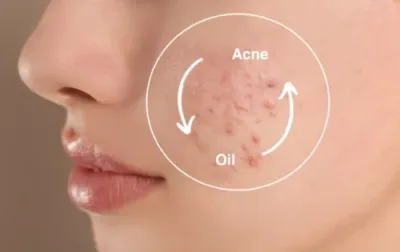How to solve the redness of oily and acne-prone skin after chemical peel?

Background: Chemical peels with salicylic acid have a very good effect on oily acne-prone skin. But the skin often becomes red, dry, or even stinging after peeling. Most people think it is a normal reaction that will disappear after a few days. Actually even if no visible acne on oily acne-prone skin, there is still chronic low-intensity inflammation (such as TNF-α, IL-1α) under the skin. Chemical peels may activate inflammatory factors, causing redness, stinging, and even inducing rosacea. If the acid concentration is very high, the results are even worse.
Solution:
- Observe and judge the degree of inflammation
First, use an instrument to test the skin inflammation status before chemical peeling. Or use a standard acid solution to test the skin sensitivity. After know the degree of inflammation, formulate a peeling plan, such as concentration, time frequency. If skin is too bad, then wait until the skin recovers.
- Relieve inflammation
For mild inflammation, it is recommended to use anti-inflammatory repair gels (such as aloe vera gel, centella asiatica gel).
For severe inflammation, it is recommended to use anti-inflammatory drugs for treatment first.
- Low-concentration salicylic acid to establish tolerance
Since oily acne skin is more sensitive, it is best to start with low-concentration salicylic acid (<2%) or super-salicylic acid (0.5%) to establish tolerance. It will avoid acute stimulation to oily acne skin.
- High-concentration salicylic acid peeling
When the skin gradually builds tolerance, the concentration of salicylic acid can be increased to 20% to 30%.
It is best to use supra-molecular salicylic acid, which releases slowly and reduces irritation.
- Calm the skin and repair the skin barrier
After chemical peeling, use neutralizing solution to balance the pH as soon as possible.
Then use an iced collagen peptide mask to calm the skin.
After 24 hours use ceramide lotion to repair the skin barrier .
Summary: According to the inflammatory state of the skin.1)restore the skin condition first. 2)gradually increase the acid tolerance. 3) do a good job of calming and repairing the skin. These steps can avoid and alleviate the discomfort and irritation caused by salicylic acid chemical peels to oily and acne-prone skin. It will effectively treat the skin problems of oily and acne-prone skin.